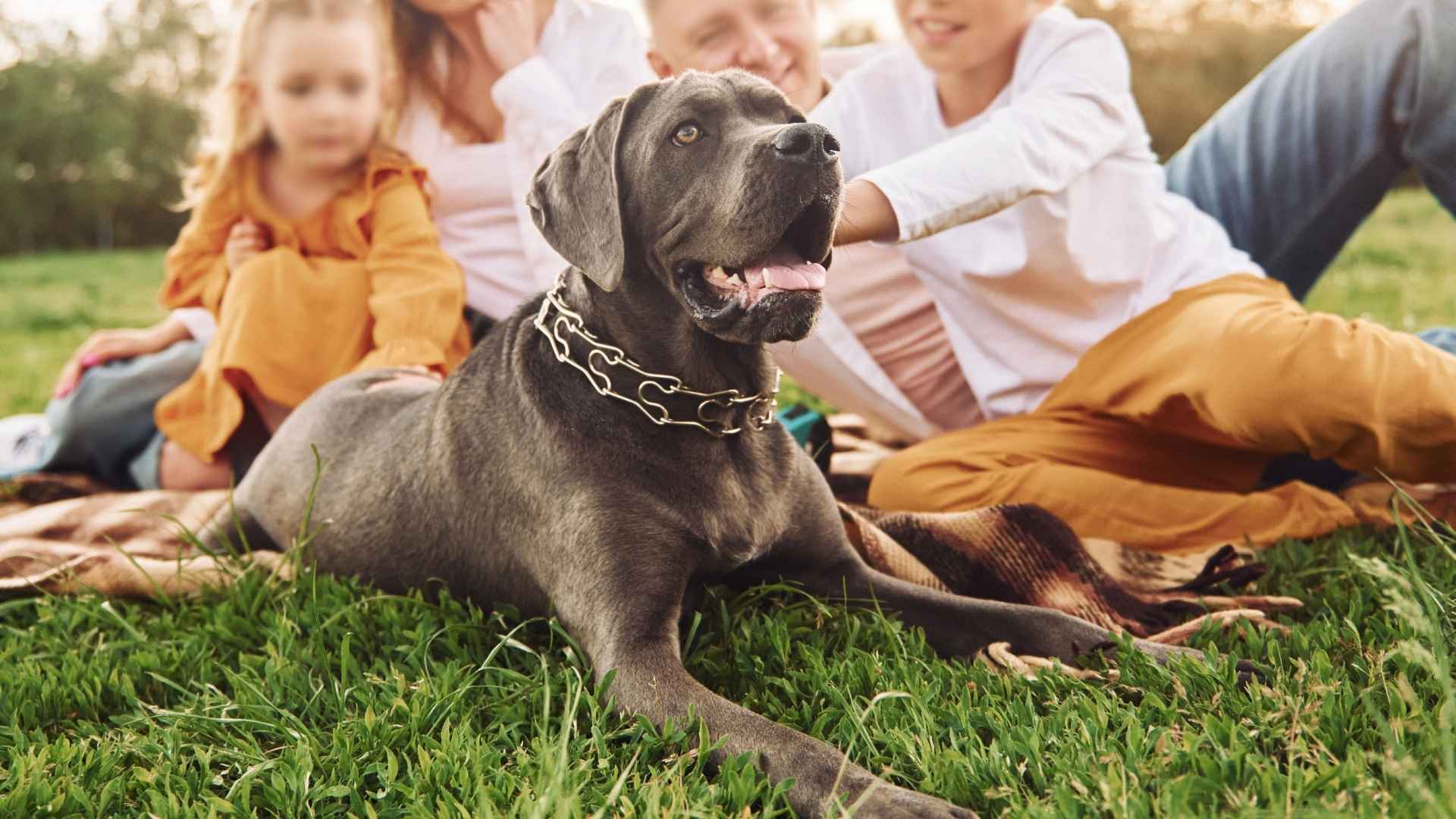In a quiet suburban street, a German Shepherd named Rex became a hero overnight. Alerted by instincts sharper than any alarm, he confronted an intruder and shielded his family from harm. Such acts of courage are not rare—some dogs are simply born protectors, ready to put themselves on the line when danger comes knocking.
But bravery in dogs goes far beyond growls and guarding. It’s the fearless leap into the unknown, the unshakable loyalty that refuses to falter, and the instinct to protect loved ones no matter the odds. From service dogs standing firm in the chaos of disaster zones to loyal companions who keep watch over sleeping children, these canine heroes embody courage in every heartbeat.
In this guide, we’ll meet some of the most courageous dog breeds—those that would charge into fire, face down predators, or quietly shield their people from harm. These are the four-legged warriors whose bravery is matched only by their love. Let’s begin.
Most Bravest Dog Breeds For Her Family & Friends
1. German Shepherd

Originating in Germany, the German Shepherd—also called the Alsatian—is a large, powerfully built herding breed known for its intelligence. AKC says the German Shepherd Dog is courageous and confident. Developed from traditional farm dogs, they typically stand 22–26 inches tall and weigh 50–90 pounds, with a lifespan of 12–14 years.
Their double coat, often black and tan or sable, combines a coarse outer layer with a dense undercoat. Recognized as a top working breed, they serve in police, military, and search-and-rescue roles, yet also thrive as devoted family companions.

Care Needs
German Shepherds are active, high-energy dogs that require daily exercise, mental stimulation, and consistent training. Without structured activities—like obedience work, agility, or long walks—they can become restless or develop behavioral issues.
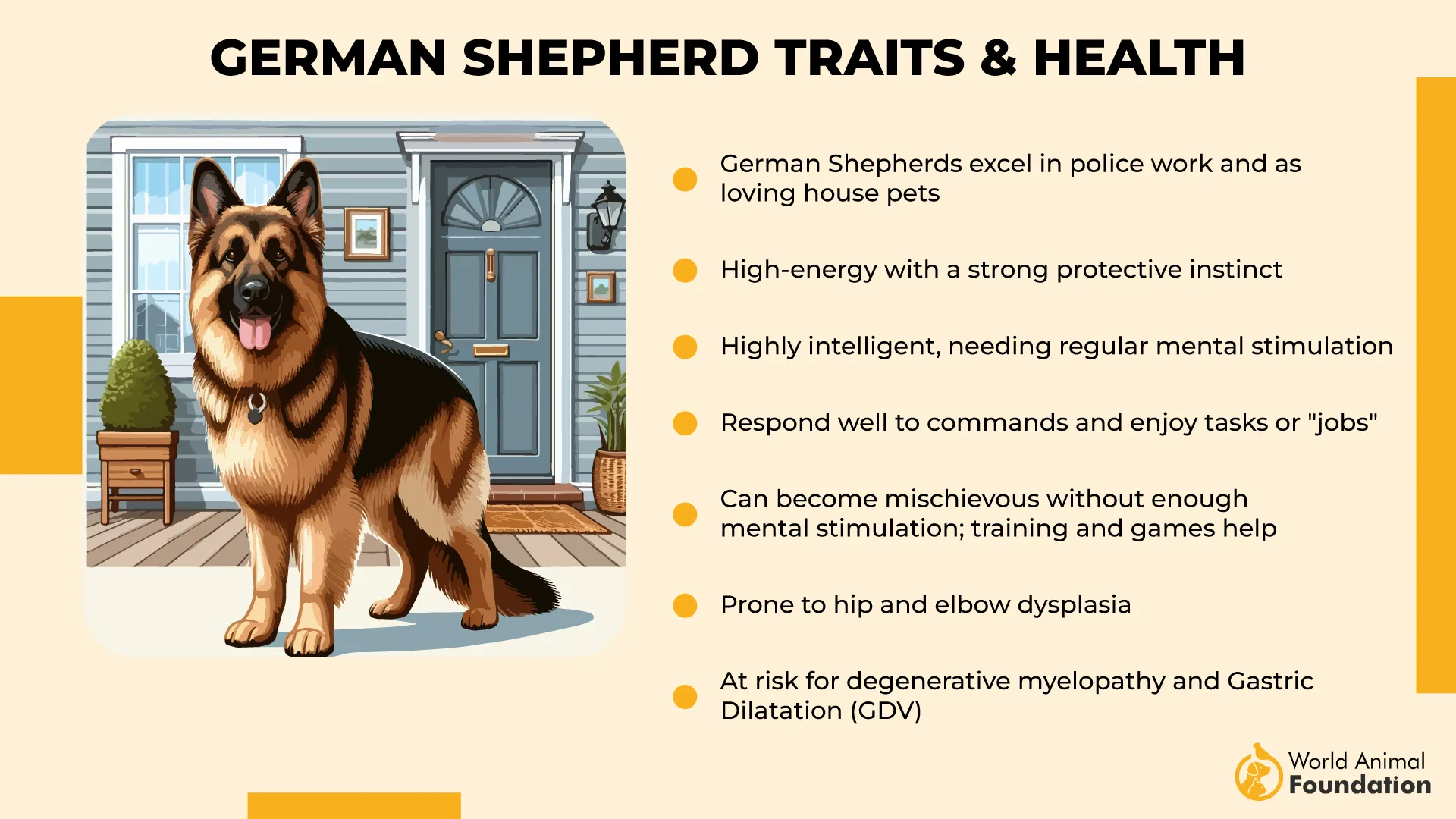
Early socialization is essential to channel their protective instincts appropriately. Grooming involves weekly brushing (more during seasonal shedding) and regular ear, teeth, and nail care. They need a balanced, protein-rich diet to support their muscular build and energy levels.
Did you know? In 1990, a German Shepherd guide dog named Orient helped Bill Irwin become the first blind hiker to complete the entire Appalachian Trail.
2. Rottweiler

Also known as the “Rottie,” the Rottweiler is a powerful and self-assured working breed with roots tracing back to ancient Rome. Descended from mastiff-type dogs that marched with the Roman legions, the breed found its name and purpose in Rottweil, Germany, where it drove cattle and safeguarded butchers’ earnings—earning the nickname “the Butcher’s Dog.”
Standing between 22 and 27 inches tall at the shoulder and weighing 90 to 110 pounds, Rottweilers are impressively muscular with a short, coarse black coat accented by rich tan markings.
PetMD says Rottweilers can be susceptible to various health issues, so regular veterinary checkups are important for maintaining their well-being, and pet insurance may be a worthwhile consideration when getting a Rottweiler puppy.
Their confident stance, broad chest, and strong hindquarters are as functional as they are imposing. With a lifespan of 9–10 years, these guardians balance watchfulness with surprising playfulness.
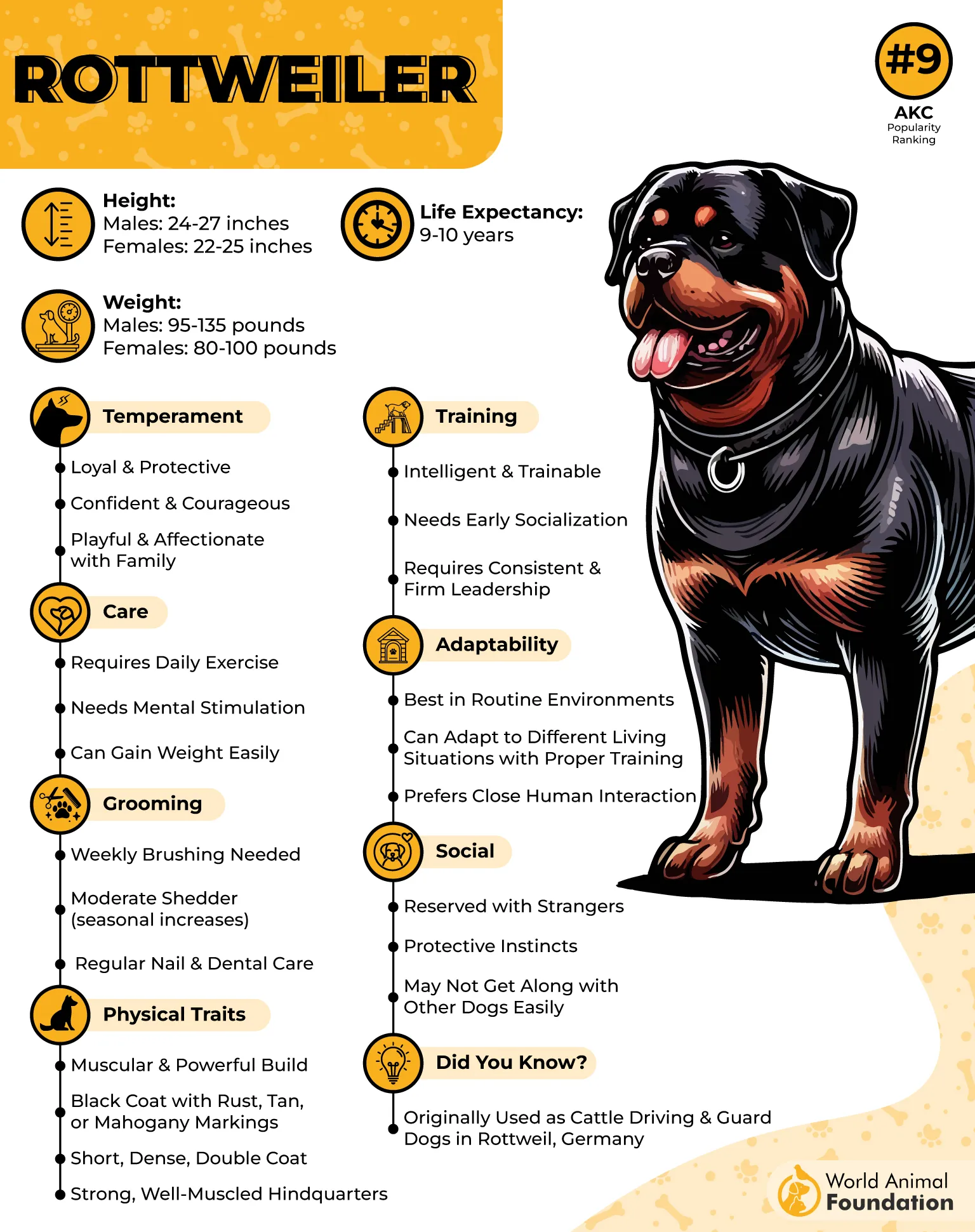
Care Needs
Rottweilers thrive on structure, early training, and consistent socialization. They require at least one hour of daily physical exercise—walks, playtime, or structured training sessions—paired with mental challenges like puzzle toys or obedience drills.
Without enough stimulation, they may resort to unwanted habits such as chewing or excessive barking. Positive reinforcement and reward-based methods work best, fostering trust and cooperation.
Did you know? A real Rottweiler named Toby inspired the beloved “Good Dog, Carl” children’s book series by Alexandra Day.
3. Doberman Pinscher
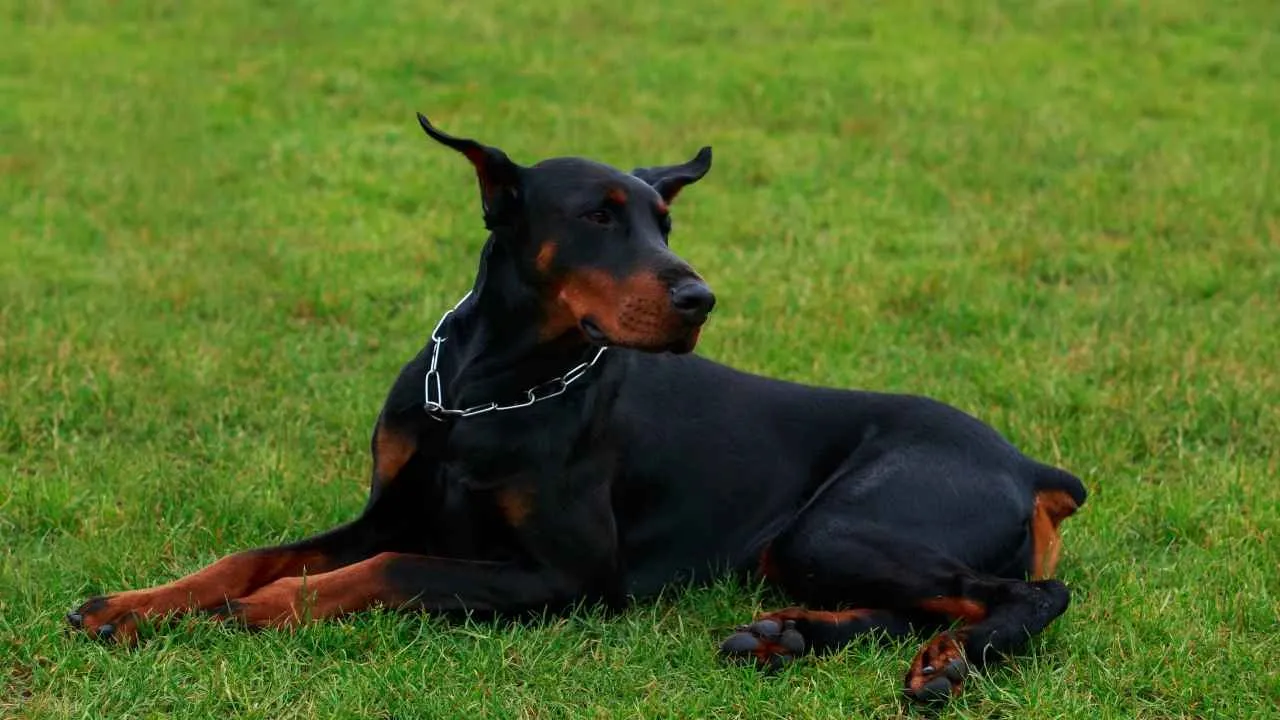
Sleek, powerful, and brimming with confidence, the Doberman Pinscher was developed in the late 19th century in Apolda, Germany, by Karl Friedrich Louis Dobermann—a tax collector who needed a fearless companion to protect him on his rounds. Originally bred from a mix of Rottweilers, German Pinschers, and Manchester Terriers, the Doberman quickly proved itself in roles ranging from military service to search and rescue.
Standing 24–28 inches tall and weighing 60–100 pounds, this working group breed sports a short, smooth coat in black, blue, fawn, or red, with distinctive rust markings.
Known for intelligence, alertness, and unwavering loyalty, a well-trained Doberman is both a devoted family member and an imposing deterrent to intruders. With an average lifespan of 10–12 years, they can thrive as loving protectors when given proper guidance and activity.
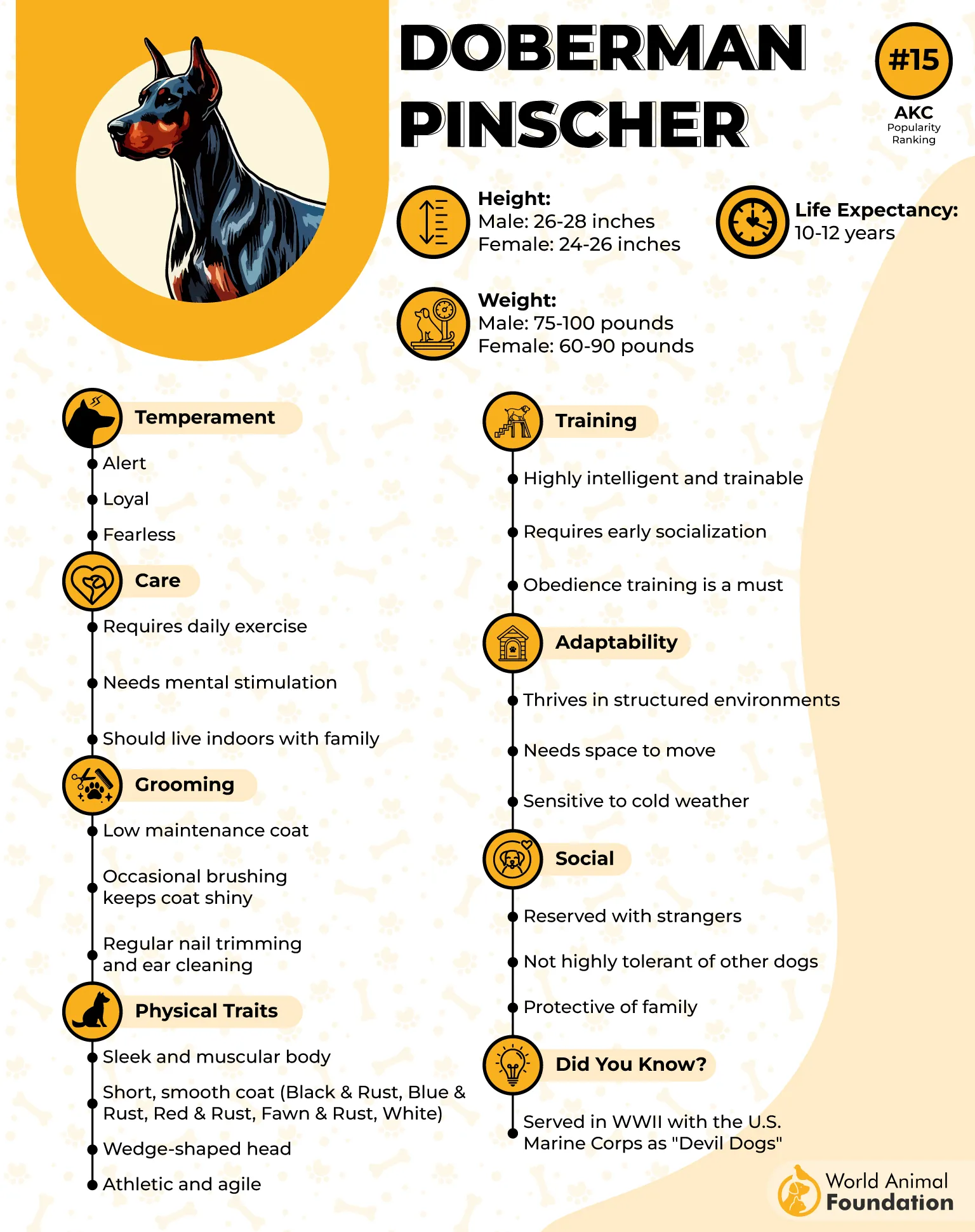
Care Needs
These companion dogs are energetic athletes who require daily physical exercise and mental stimulation to stay happy and well-behaved. Long walks, runs, or play sessions in a secure yard are essential, as boredom can lead to destructive habits. Grooming is minimal. Britannica says caring for a Doberman’s coat involves brushing once or twice a week, along with occasional bathing.
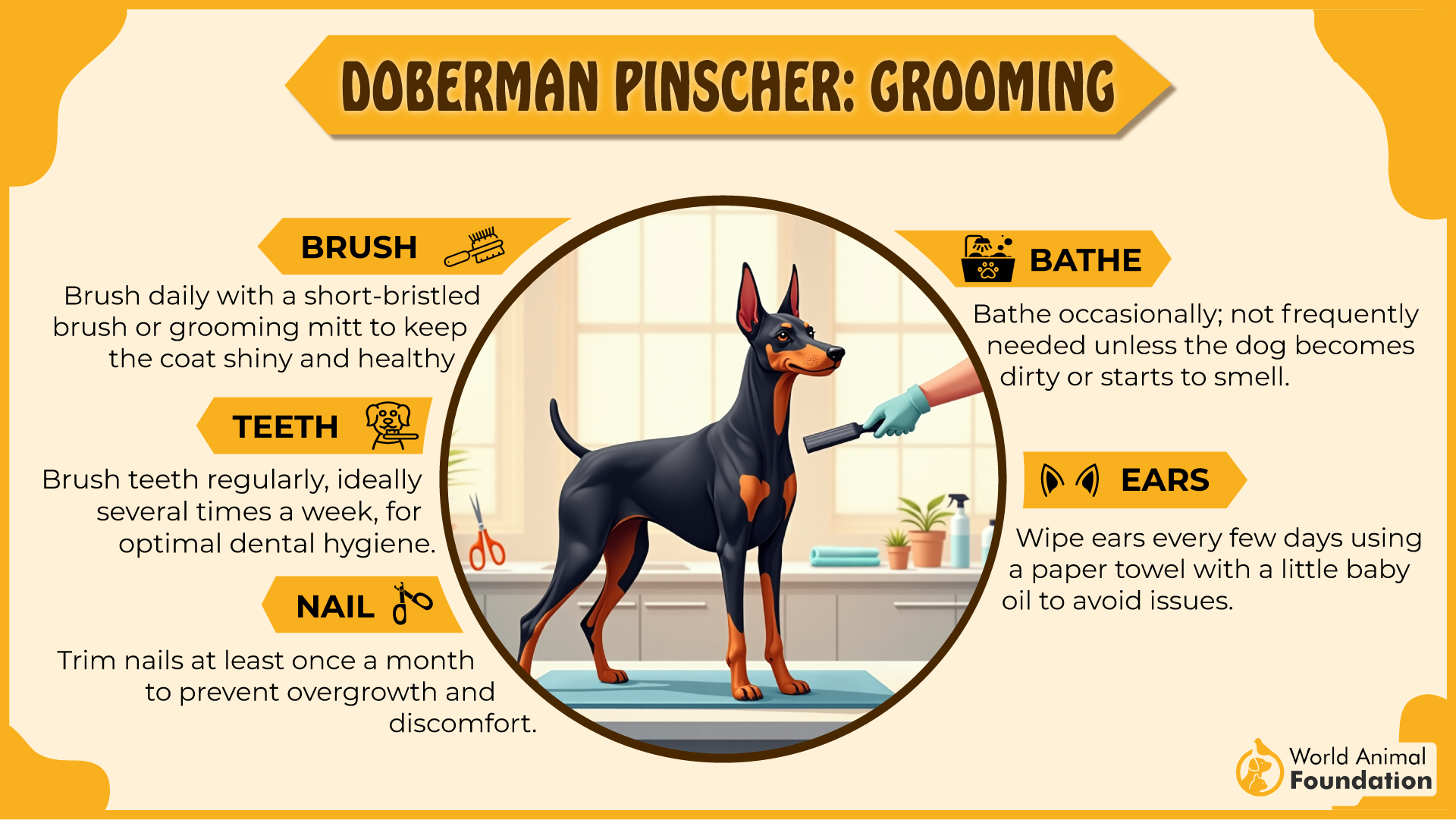
Monthly nail trims and regular dental care are important for overall health. Because the breed can be prone to certain conditions like cardiomyopathy or Von Willebrand disease, routine veterinary checkups are vital. Providing a balanced, high-quality diet tailored to their age and activity level will help maintain their muscular build and vitality.
Did you know? Kurt, a Doberman, was the first canine casualty among the 60 dogs aiding U.S. Marines in the 1944 Battle of Guam, and he is honored with a bronze statue at the National War Dog Cemetery.
4. Bullmastiff
Also known as the “Gamekeeper’s Night Dog,” the Bullmastiff is a formidable yet affectionate breed that traces its roots to 19th-century England. Created by crossing the English Mastiff with the now-extinct Old English Bulldog, it was bred to quietly track and apprehend poachers without inflicting serious injury.
Recognized by the Kennel Club in 1924 and the American Kennel Club in 1933, the breed has since transitioned from estate guardian to trusted police dog and loyal companion of the family.
A fully grown Bullmastiff stands 24–27 inches at the shoulder and weighs between 100–130 pounds. With a broad head, small V-shaped ears, muscular frame, and a short, dense coat in fawn, red, or brindle, it is as imposing as it is dignified. Known for being calm and docile at home yet fearless when duty calls, this breed’s protective instincts are matched by its devotion to family.
Care Needs
Despite their size, Bullmastiffs do not require extreme exercise—daily walks and moderate play keep them fit. Obedience training is essential to manage their guarding instincts. Their short coat is low-maintenance, needing only weekly brushing and occasional baths. Regular vet checkups, dental care, and nail trimming will help maintain their health and comfort.
Fun Fact: In their early days, Bullmastiffs worked silently at night, using sheer strength to pin intruders until the gamekeeper arrived.
5. Belgian Malinois
Also known as the “Mal,” the Belgian Malinois hails from the city of Malines in Belgium, where it was first bred in the late 1800s as one of four Belgian sheep-herding varieties. Standing 22–26 inches tall and weighing 40–80 pounds, these athletic, squarely built dogs are recognized for their black masks, alert ears, and short coats in shades from fawn to mahogany.
With a lifespan of 14–16 years, the Mal is a member of the Herding group and is celebrated for its stamina, agility, and sharp intelligence. Its elegant yet muscular frame allows it to work tirelessly, making it a preferred partner for military and police teams worldwide.
Care Needs
This dog breed thrives on activity, mental challenges, and close companionship with their owners. They require daily vigorous exercise—running, herding drills, or advanced obedience work are ideal. Without proper stimulation, they can become restless or develop destructive habits.
Consistent training from an early age is essential, as their intelligence and drive need structured guidance. Grooming is minimal, with weekly brushing to control shedding and occasional baths.
Like all active breeds, they benefit from a balanced, high-quality diet to maintain peak performance, along with regular vet checkups to monitor joint and dental health.
Fun Fact: In 2011, a Belgian Malinois named Cairo played a pivotal role in the U.S. Navy SEAL mission that led to the capture of Osama bin Laden.
6. Boerboel
Also called the South African Mastiff, the Boerboel is a formidable yet devoted guardian. Originating in South Africa, this breed was developed to protect homesteads from predators and intruders.
Standing up to 27 inches tall and weighing as much as 200 pounds, the Boerboel’s muscular build, broad head, and powerful jaws leave no doubt about its protective capabilities. Despite their imposing presence, they are deeply loyal and affectionate with their families.
Intelligent, confident, and eager to learn, Boerboels thrive when training and socialization begin early, preventing dominance issues as they mature.
Care Needs
This loyal dog is an active, athletic dog that requires daily exercise—long walks on a leash or energetic play in a secure yard are essential. They benefit from mental challenges, such as training drills or puzzle toys, alongside physical activity to keep their intelligent minds engaged.
Interaction with their owners is crucial, as they form strong bonds and can become restless or destructive if left alone too often. While they are low-maintenance in grooming due to their short coat, consistent training, early socialization, and firm, positive leadership are vital for a well-balanced companion.
Fun Fact: The Boerboel is considered one of the most agile mastiff-type breeds, capable of moving with surprising speed and grace for its size.
7. Presa Canario
Also known as the Perro de Presa Canario, Canary Mastiff, or Dogo Canario, this imposing breed hails from Spain’s Canary Islands, particularly Gran Canaria and Tenerife. Traditionally, it served as a livestock guardian, herding dog, and protector of property.
With a height ranging from 22 to 26 inches and weighing 84 to 130 pounds, the Presa Canario is powerfully built with a broad, square head, muscular frame, and a confident stance that commands attention.
Its lineage as a working dog gives it a fearless and assertive nature, making it one of the most courageous breeds in the world. However, this same boldness means it’s best suited for experienced owners who can provide firm, consistent leadership and structured training
Care Needs
These fearless dog breeds require early and ongoing socialization to safely interact with strangers, children, and other animals. Obedience training should be positive yet firm, reinforcing boundaries without harshness. Due to its high energy and strong guarding instincts, this breed thrives with daily exercise—long walks, secure outdoor play, or structured tasks.
Mental stimulation is just as important, helping prevent boredom-driven behaviors. Regular veterinary checkups, grooming for its short coat, and a high-quality diet support its overall health and longevity, which typically ranges from 9 to 11 years.
Fact: The Presa Canario was once used in dog fighting, which remained legal in Spain until 1936.
Conclusion
Bravery in dogs takes many forms—whether it’s a guard dog protecting loved ones, a rescue dog pulling someone to safety, or police dogs and therapy dogs offering comfort during the hardest moments. While breeds like the Labrador Retriever, Golden Retriever, and Catahoula Leopard Dog weren’t detailed in this list, they, too, have earned reputations for courage. Many excel in search and rescue missions, proving that fearless loyalty can be both life-saving and heartwarming.
From powerful hunting breeds to devoted terrier breeds, countless other dogs show bravery in ways that make them excellent family dogs. A golden retriever may shine as a therapy dog, while a hunting dog might still be a great family pet at home. These loyal companions don’t just guard property—they guard hearts, becoming trusted family members. Whether as great family pets or tireless working dogs, their courage enriches the lives of their family members and ensures they remain unforgettable.


